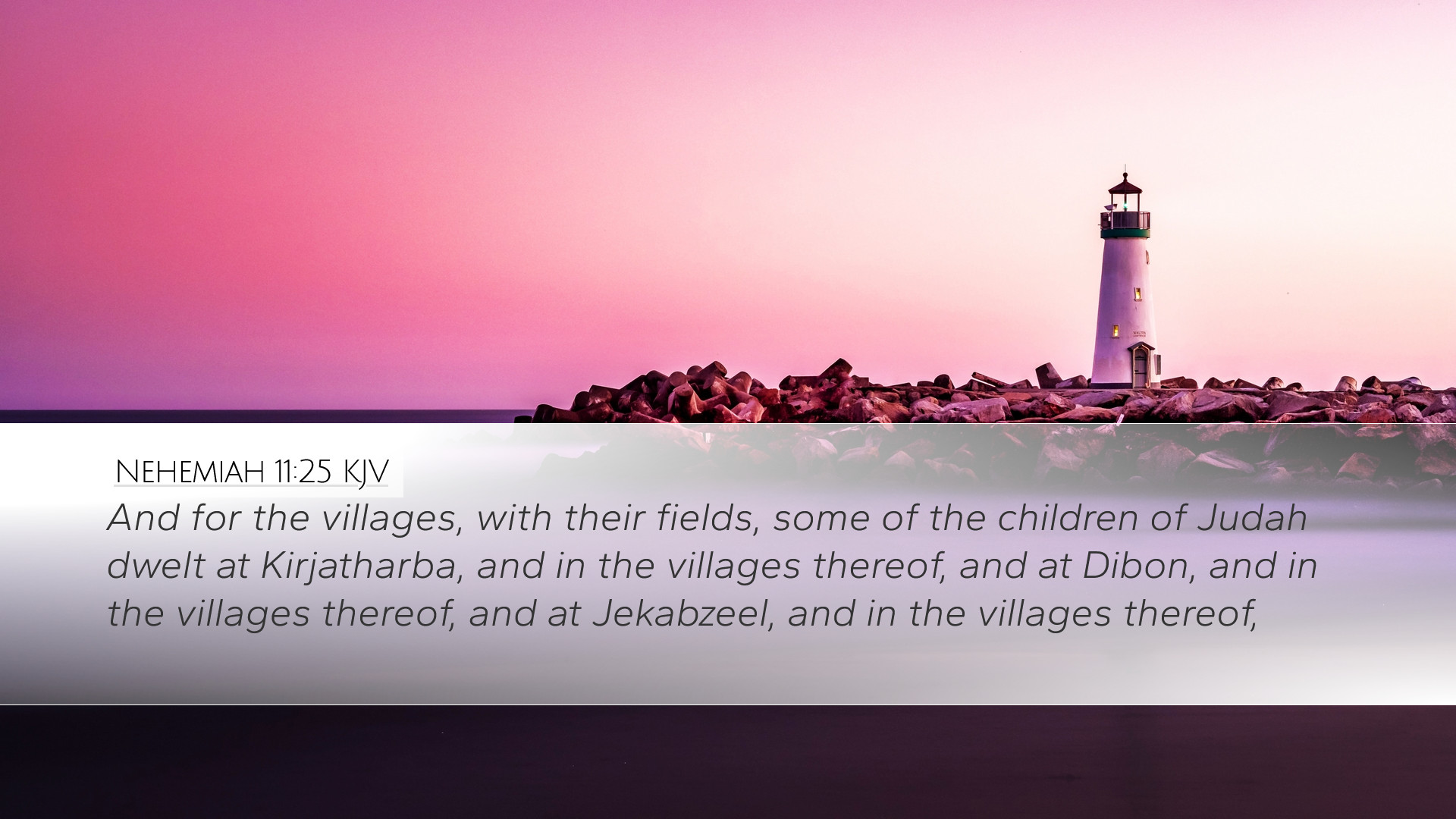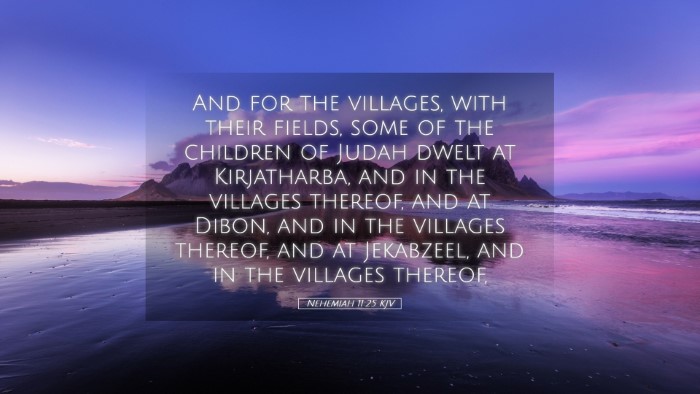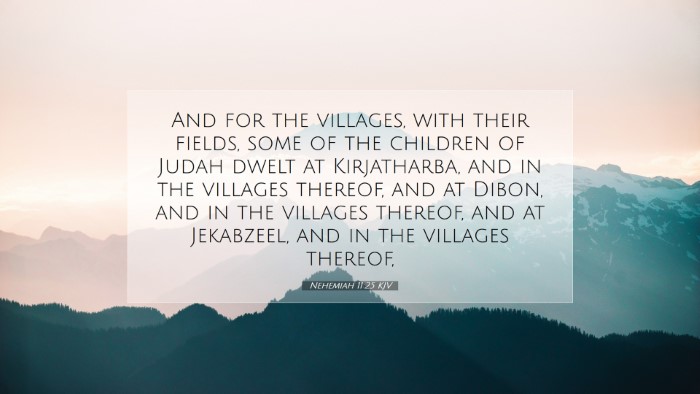Commentary on Nehemiah 11:25
Verse Context: Nehemiah 11:25 reads: "And as for the towns of Judah, they dwelt in the cities thereof, every one in his possession, and in their places." This verse highlights the organization and resettlement efforts in the towns within Judah after the Babylonian exile, emphasizing the restoration of community life and land ownership.
Historical Background
Nehemiah was a pivotal figure during the restoration of Jerusalem following the Babylonian exile. The book of Nehemiah captures not just the physical rebuilding of the city walls but also the social and communal re-establishment of the Jewish people in their ancestral lands. Chapter 11 serves a crucial purpose in detailing the resettlement of individuals and families back to their cities to ensure God’s people inhabited these areas effectively.
Theological Significance
This particular verse reveals key theological themes regarding identity, community, and restoration. It indicates that returning to one’s “possession” was not merely a physical act but a spiritual reclaiming of God’s promises made to Israel.
Insights from Commentaries
Matthew Henry
According to Matthew Henry, this verse illustrates the necessity for the people to be established in their land to fulfill God’s promise. Henry emphasizes that each person dwelling in his rightful possession indicates divine providence in the life of the believers. He notes, "They dwelt in their cities, which signifies not just a physical return but a fulfillment of a prophetic promise to restore the people of God to their designated places."
Albert Barnes
Albert Barnes provides a detailed analysis of the implications surrounding the settlements in Judah. He points out that "the cities of Judah" were not just a collection of towns but a means of sheltering the Jewish identity and culture. Barnes notes that this was essential for both spiritual health and social stability. The verse also indicates a structured return, emphasizing order as the people took up their presence and responsibilities within their own communities.
Adam Clarke
Adam Clarke offers insights into the logistics and civic structure of the resettlement. He remarks on the social hierarchy that emerged by distinguishing between the cities and their inhabitants corresponding to the families, illustrating a new form of community governance. Clarke argues that this organization was vital, stating, "Every one in his possession portrays the importance of individual responsibility and stewardship over God’s blessings, revealing the desired harmony in communal living."
Practical Applications for Today
The lessons derived from Nehemiah 11:25 extend beyond historical context into contemporary Christian living:
- Community Restoration: Just as the Israelites returned and restored their communities, modern congregations are called to engage in restorative practices within their communities, understanding their possession as both spiritual gifts and responsibilities.
- Divine Providence: Recognizing that God ordains a place for every believer enhances our trust in God's sovereign plan, reminding us that we each have a role within the larger body of Christ.
- Stewardship of Our Places: The notion that individuals dwelt in their possessions calls Christians to consider how they can best steward their resources and relationships in their designated areas of influence.
- Identity and Heritage: The notion of returning to one’s place encourages believers to recognize and embrace their spiritual heritage, reinforcing the connection between God’s covenant with His people and their current identity as part of that legacy.
Conclusion
Nehemiah 11:25 serves as a poignant reminder of how God orchestrates the return and the restoration of His people. Through a close examination of the historical and theological significance of this verse, as explained by notable commentators, we gain a deeper understanding of our own roles within the divine narrative. Pastors, students, theologians, and Bible scholars alike can draw rich insights that not only inform their knowledge but also inspire active participation in God's ongoing redemptive work in community settings today.


